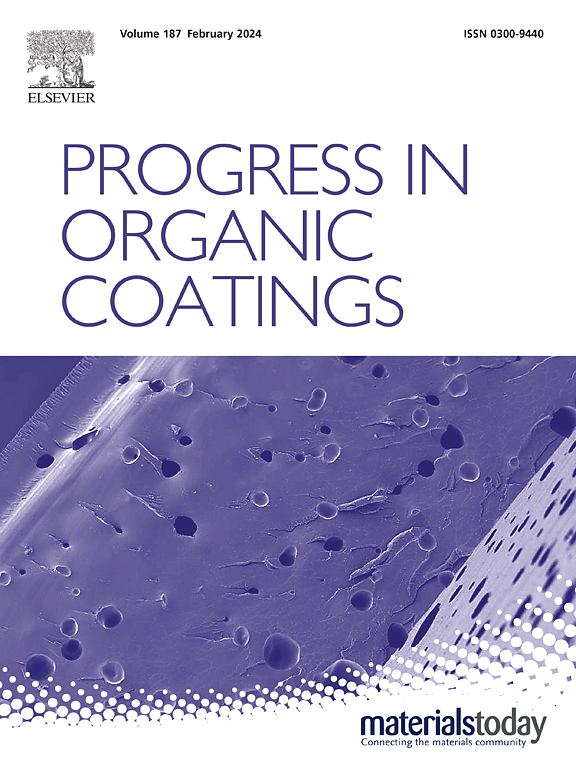Corrosion protection of epoxy-clay nanocomposite coatings on metallic substrates in saline environments containing alkaline copper quaternary ammonium wood preservatives
IF 6.5
2区 材料科学
Q1 CHEMISTRY, APPLIED
引用次数: 0
Abstract
In this study, the epoxy-clay nanocomposites (ECNs) containing 0.5, 1.0, and 2.0 wt-% of organophilic modified clay (OMC) with CTAB as intercalating agent were prepared and applied in anticorrosion for metallic substrates in the forms of cold-rolled steel (CRS) electrode/steel panel/screw in saline condition containing 2 wt-% of alkaline copper quaternary (ACQ) ammonium.
The corrosion resistance of CRS coated with ECN was evaluated under saline conditions, both in the presence and absence of ACQ, through a series of electrochemical corrosion tests. Ecorr of CRS-decorated with neat epoxy coating shifted from −611 to −624 mV in saline solution by introducing 2 wt-% of ACQ, implying that Cu2+ existing in saline solution with ACQ may speed up oxidation rate of iron. Moreover, Ecorr of CRS electrode coated with ECN-0.5 containing 0.5 wt-% of OMC platelets shifted from −624 mV to −595 mV, indicating that clay platelets existing in ECN coating may effectively increase the diffusion pathway of Cu2+/oxygen gas as supported by the concentration of Cu2+ in ACQ determined by ICP-MS after electrochemical measurements and barrier property of oxygen gas was evaluated using a gas permeability analysis (GPA) technique, therefore slow down the oxidation rate of iron. Moreover, increasing the clay loading in ECN, the ECN-1 and ECN-2 exhibited the Ecorr = −571 and − 552 mV, respectively, indicating that the higher loading of dispersing OMC in epoxy matrix may provide a much longer pathway length of Cu2+ and O2 gas. Accelerated salt-spray corrosion of steel panel and screw in aggressive medium were also evaluated according to ASTM B-117. The results obtained from the salt-spray tests aligned well with those from the electrochemical evaluations. Adhesion and wear resistance of ECN coatings were also investigated by ASTM 3359 and ASTM D 4060, respectively.
求助全文
约1分钟内获得全文
求助全文
来源期刊

Progress in Organic Coatings
工程技术-材料科学:膜
CiteScore
11.40
自引率
15.20%
发文量
577
审稿时长
48 days
期刊介绍:
The aim of this international journal is to analyse and publicise the progress and current state of knowledge in the field of organic coatings and related materials. The Editors and the Editorial Board members will solicit both review and research papers from academic and industrial scientists who are actively engaged in research and development or, in the case of review papers, have extensive experience in the subject to be reviewed. Unsolicited manuscripts will be accepted if they meet the journal''s requirements. The journal publishes papers dealing with such subjects as:
• Chemical, physical and technological properties of organic coatings and related materials
• Problems and methods of preparation, manufacture and application of these materials
• Performance, testing and analysis.
 求助内容:
求助内容: 应助结果提醒方式:
应助结果提醒方式:


